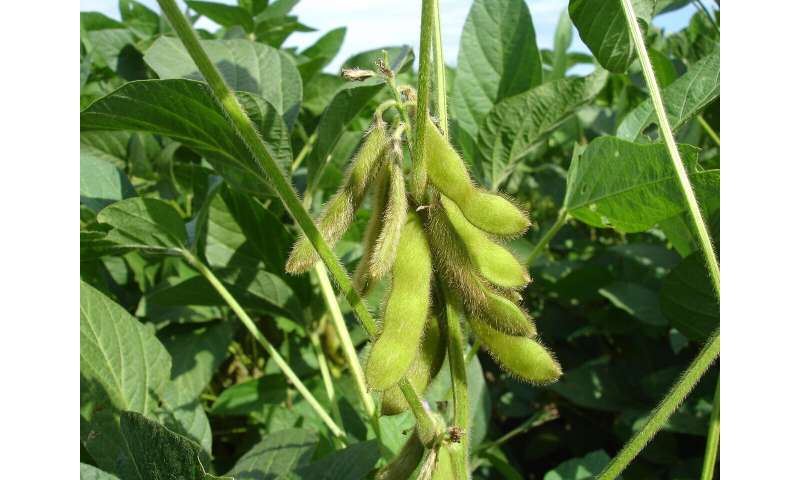Research explores factors influencing soybean injury by synthetic auxin herbicides
by Science X staff
Synthetic auxin products have given growers an important option for managing weed populations resistant to glyphosate and other herbicides. But according to an article featured in the journal Weed Technology, there is one important downside to dicamba, 2,4-D and other synthetic auxins. They often move off-target and can cause severe injury to sensitive plants growing nearby.
Complaints about the issue persist, despite the introduction of products reported to have reduced volatility. For this reason, researchers from the University of Wisconsin-Madison decided to take a close look at factors that might influence synthetic auxin volatility and soybean injury, especially as it applies to the relationship between glyphosate and synthetic auxins commonly used in corn.
Their study found that four out of seven commercial formulations of dicamba and 2,4-D became highly acidic when mixed with glyphosate, which increased their potential for volatility. Glyphosate was shown to have a greater impact on pH than any other spray component or additive.
Among their other significant findings: High temperatures and low wind speeds in the 48 hours after a synthetic auxin application were found to result in greater injury to susceptible soybean plants. Dicamba was found to produce greater injury than 2,4-D. In addition, application of dicamba formulations late in the growing season were found to produce similar levels of soybean injury as applications made early in the season.
More information: Sarah Striegel et al, Spray Solution pH and Soybean Injury as Influenced by Synthetic Auxin Formulation and Spray Additives, Weed Technology (2020). DOI: 10.1017/wet.2020.89
Provided by Cambridge University Press